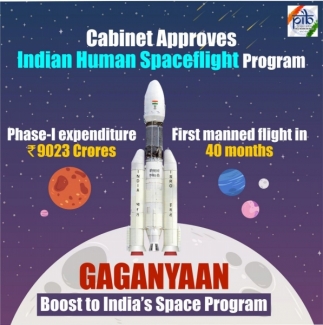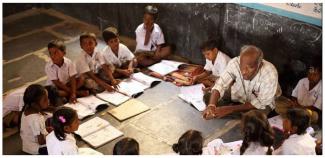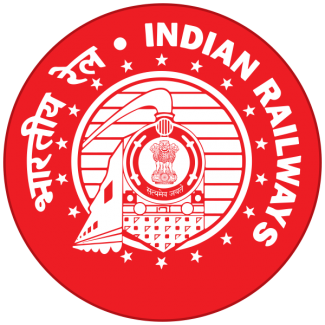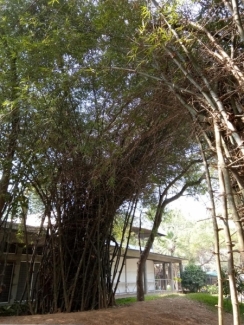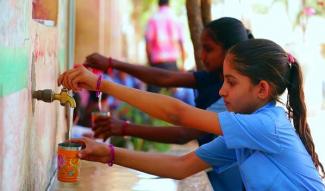
इस समाचार को हिन्दी में पढ़े आगे....
In the wake of Covid-19 pandemic, to ensure clean tap water supply to children in schools, anganwadi centres and ashramshalas (residential schools) for their wellbeing and better health as envisioned by Prime Minister Narendra Modi, on 2nd October, 2020, a campaign was launched to make provision of tap water supply in these institutions. In less than ten months since the launch of this campaign, provision of tap water has been made in 6.85 lakh (66%) schools, 6.80 lakh (60%) anganwadi centres (AWCs)and 2.36 lakh (69%) Gram Panchayats and Community Healthcare Centres (CHCs) in villages across India.
In Andhra Pradesh, Goa, Gujarat, Haryana, Himachal Pradesh, Kerala, Punjab, Sikkim, Tamil Nadu, and UT of Andaman & Nicobar Islands, provision of clean tap water supply in all schools, ashramshalas and anganwadi centres have been made, despite Covid-19 pandemic and lockdown resulting into repeated disruptions.Once schools and ashramshalas open, safetap water to children will greatly contribute in their better health, improved sanitation and improved hygiene.
To ensure safe tap water to children, on 29th September 2020, Prime Minister Narendra Modi appealed to all States and UTs, to reach every school and anganwadi centre with tap water connection on priority basis. To translate the vision of the Prime Minister, a 100-days campaign was launched by the Union Minister Gajendra Singh Shekhawat on 2nd October, 2020 to bring awareness and a sense of urgency to provide clean drinking water to children across the country. National Jal Jeevan Mission reached out to States/ UTs to ensure that during the campaign period, Gram Sabhas are convened and resolutions passed to provide safe water in all schools, ashramshalas, anganwadi centres, Gram Panchayat buildings and healthcare and wellness centres.
In less than 10 months, as a result of this sustained campaign, 6.85 lakh schools, 6.80 lakh anganwadi centres and 2.36 lakh GPs/ CHCs have tap water supply for drinking water and cooking mid-day meal, 6.18 lakh schools have tap water in toilets/ urinals and 7.52 lakh schools have tap water hand washing facility. This provision of tap water supply not only contributes to better health of children but also prevents spread ofwater-borne diseases. To ensure water availability and treatment of used water, in 91.9 thousand schools, rain water harvesting and in 1.05 lakh schools, grey water management systems have been put in place. This will not only boost the water availability but also create awareness among children and inspire them to learn water management in their growing stage.
Due to unsafe water, poor sanitation and hygiene, children are susceptible to water-borne diseases like diarrhea, dysentery, cholera, typhoid, etc. Repeated infections due to consumption of unsafe water and poor sanitation in formative years of children may lead to adverse health effects like stunting. In areas where water sources are contaminated with Arsenic, Fluoride, heavy metals, etc., prolonged consumption of contaminated water may lead to serious health issues. Therefore, under this campaign, tap water supply of prescribed quality is being provided for drinking and cooking mid-day meal, for handwashing and in toilets/ urinals of schools and anganwadi centres.
Acknowledging the need of ‘potable piped water’ to children, teachers, support staff, anganwadi workers and the care givers for repeated hand washing to prevent Covid-19 pandemic, the mission is pushing for providing safe piped water supply to all schools, ashramshalas and anganwadi centres at the earliest.
On 15 August, 2019, at the time of launch of Jal Jeevan Mission, out of 18.98 Crore rural households in country, only 3.23 Crore (17%) had tap water connections. Despite Covid-19 pandemic and lockdown disruptions, Jal Jeevan Mission provided 4.57 Crore tap water connections in last 23 months. As a result, today, 7.80 Crore (41.14%) households have tap water supply. Goa, Telangana, Andaman & Nicobar Islands and Puducherry have achieved 100% household connection in rural areas and has become ‘Har Ghar Jal’.
Following the principle of Prime Minister’s vision of ‘SabkaSaath, Sabka Vikas, Sabka Vishwas’, the motto of the Mission is that ‘no one is left out’ and every household in the village should be provided with tap water connection. At present, in 74 districtsand about 1.04 lakh villages, every rural householdhasbeen provided tap water connection and have become ‘Har Ghar Jal’.Status of the implementation of Jal Jeevan Mission can be accessed from JJM Dashboard available athttps://ejalshakti.gov.in/jjmreport/JJMIndia.aspx
Water Quality Management Information System (WQMIS), an online portal, has been developed in partnership with Indian Council of Medical Research (ICMR) for water quality sample collection, testing and uploading/ communicating results to users. In case, any water sample tested is found to be contaminated, automated alert is sent to concerned authorities to initiate remedial action. On this portal, an individual can register their sample and choose nearby lab to get the water sample tested. This portal can be accessed at following weblink:https://neer.icmr.org.in/website/main.php.As on 25.07.2021, about 4.9 lakh samples for water quality testing has been received through WQMIS portal.
The water supply facilities created under Jal Jeevan Mission will be operated and maintained by the Gram Panchayat and/ or its sub-committee i.e. Village Water & Sanitation Committee or Paani Samiti.
Development agencies like UNOPS, UNICEF and WHO are also assisting in generating awareness about the Mission, water conservation, and through WASH interventions such as handwashing etc. in schools.
Jal Jeevan Mission announced by the Prime Minister on 15th August 2019 from the Red Fort is under implementation in partnership with States/ UTs to provide tap water connection to every rural household of the country by 2024. The total outlay of the mission is Rs. 3.60 lakh Crore.
नल से जल की आपूर्ति 66 प्रतिशत स्कूलों और 60 प्रतिशत आंगनबाड़ी केंद्रों तक पहुंची
कोविड-19 महामारी को देखते हुए स्कूलों, आंगनबाड़ी केंद्रों और आश्रमशालाओं (आवासीय स्कूलों) में बच्चों को उनकी भलाई और बेहतर स्वास्थ्य के लिए स्वच्छ नल जल की आपूर्ति सुनिश्चित करने के लिए, जैसा कि प्रधानमंत्री नरेन्द्र मोदी द्वारा 2 अक्टूबर, 2020 को कल्पना की गई थी, इन संस्थानों में नल जल आपूर्ति की व्यवस्था करने के लिए एक अभियान चलाया गया था।इस अभियान के शुरू होने के बाद से दस महीने से भी कम समय में 6.85 लाख (66 प्रतिशत) स्कूलों,6.80 लाख (60प्रतिशत) आंगनबाड़ी केंद्रों, 2.36 लाख (69प्रतिशत) ग्राम पंचायतों तथा पूरे देश के सामुदायिक स्वास्थ्य केंद्रों (सीएचसी) में नल जल आपूर्ति की व्यवस्था की गई है।
कोविड-19 महामारी तथा लॉकडाउन के कारण बार-बार के व्यवधान के बावजूद आंध्र प्रदेश, गोवा, गुजरात, हरियाणा, हिमाचल प्रदेश, केरल, पंजाब, सिक्किम, तमिलनाडु और केंद्र शासित अंडमान और निकोबार द्वीप समूह मेंसभी स्कूलों, आश्रमशालाओं और आंगनबाड़ी केंद्रों में स्वच्छ नल जल आपूर्ति की व्यवस्था की गई है। एक बार स्कूल और आश्रमशालाएं खुलने के बाद बच्चों को सुरक्षित नल का पानी उनके बेहतर स्वास्थ्य, बेहतर स्वच्छता और बेहतर स्वच्छता में काफी योगदान देगा।
बच्चों को सुरक्षित नल का जल सुनिश्चित करने के लिए 29 सितंबर 2020 को प्रधानमंत्री नरेन्द्र मोदी ने सभी राज्यों और केंद्र शासित प्रदेशों से अपील की कि वे सभी स्कूल और आंगनबाड़ी केंद्र तक प्राथमिकता के आधार पर नल के पानी का कनेक्शन पहुंचाएं। प्रधानमंत्री के विजन को साकार के लिए केंद्रीय मंत्री श्री गजेंद्रसिंह शेखावत द्वारा 2 अक्टूबर, 2020 को देश भर में बच्चों को स्वच्छ पेयजल उपलब्ध कराने के लिए जागरूकता और तात्कालिकता की भावना लाने के लिए 100 दिनों का अभियान लॉन्च किया गया था।राष्ट्रीय जल जीवन मिशन राज्यों/ केंद्र शासित प्रदेशों तक पहुंचा ताकि यह सुनिश्चित किया जा सके कि अभियान की अवधि के दौरान सभी स्कूलों, आश्रमशालाओं, आंगनबाड़ी केंद्रों, ग्राम पंचायत भवनों और स्वास्थ्य देखभाल और कल्याण केंद्रों में सुरक्षित पानी उपलब्ध कराने के लिए ग्राम सभाएं बुलाई जाएं और प्रस्ताव पारित किए जाएं।
इस अभियान के फलस्वरूप 10 महीने से भी कम समय में 6.85 लाख स्कूल, 6.80 लाख आंगनबाड़ी केंद्र और 2.36 लाख जीपीएस/ सीएचसी में पेयजल और मध्याह्न भोजन पकाने के लिए नल से जल की आपूर्ति होती है, 6.18 लाख स्कूलों के शौचालयों में नल का पानी है और 7.52 लाख स्कूलों में नल के पानी से हाथ धोने की सुविधा है।नल जल आपूर्ति की यह व्यवस्था न केवल बच्चों के बेहतर स्वास्थ्य में योगदान देती है बल्कि जल जनित रोगों को फैलने से भी रोकती है।पानी की उपलब्धता और उपयोग किए गए पानी का शोधन सुनिश्चित करने के लिए91.9 हजार स्कूलों मेंवर्षा जल संचयन और 1.05 लाख स्कूलों मेंधूसर जल प्रबंधन प्रणाली लागू की गई है।इससे न केवल पानी की उपलब्धता बढ़ेगी बल्कि बच्चों में जागरूकता भी पैदा होगी और वे अपनी बढ़ती उम्र में जल प्रबंधन के बारे में सीखने के लिए प्रेरित होंगे।
असुरक्षित पानी, खराब साफ-सफाई और स्वच्छता के कारण बच्चों को डायरिया, पेचिश, हैजा, टाइफाइड आदि जलजनित बीमारियों की संभावना बनी रहती है।बच्चों के प्रारंभिक वर्षों में असुरक्षित पानी के सेवन और खराब स्वच्छता के कारण बार-बार संक्रमण होने से स्वास्थ्य पर स्टंटिंग जैसे प्रतिकूल प्रभाव पड़ सकते हैं।जिन क्षेत्रों में जल स्रोत आर्सेनिक, फ्लोराइड, भारी धातुओं आदि से दूषित होते हैंवहां दूषित पानी के लंबे समय तक सेवन से स्वास्थ्य की गंभीर समस्याएं पैदा हो सकती हैं।इसलिए इस अभियान के अंतर्गत स्कूलों और आंगनबाड़ी केंद्रों में पीने तथा मध्याह्न भोजन पकाने, शौचालयों/मूत्रालयों में हाथ धोने के लिए निर्धारित गुणवत्ता की नल जल आपूर्ति की जा रही है।
बच्चों, शिक्षकों, सहायक कर्मचारियों, आंगनबाड़ी कार्यकर्ताओं और देखभाल करने वाले लोगों को बार-बार हाथ धोने के लिए पाइप से पीने योग्य पानी की जरूरत को स्वीकार करते हुएमिशन सभी स्कूलों, आश्रमशालाओं और आंगनबाड़ी केंद्रों में जल्द से जल्द सुरक्षित पाइप जलापूर्ति प्रदान करने पर बल दे रहा है।
15 अगस्त, 2019 को जल जीवन मिशन लॉन्च किए जाने के समय देश के 18.98 करोड़ ग्रामीण परिवारों में से केवल 3.23 करोड़ (17प्रतिशत) नल के पानी के कनेक्शन थे।कोविड-19 महामारी और लॉकडाउन के कारण व्यवधान के बावजूद जल जीवन मिशन ने पिछले 23 महीनों में 4.57 करोड़ नल जल कनेक्शन प्रदान किए। फलस्वरूपआज 7.80 करोड़ (41.14प्रतिशत) परिवारों में नल के पानी की आपूर्ति होती है। गोवा, तेलंगाना, अंडमान निकोबार द्वीप समूह और पुड्डुचेरी ने ग्रामीण क्षेत्रों में 100 प्रतिशत घरेलू कनेक्शन हासिल किया है और 'हर घर जल' बन गया है।
'सबका साथ, सबका विकास, सबका विश्वास' के प्रधानमंत्री के विजन के सिद्धांत का अनुसरण करते हुए मिशन का आदर्श वाक्य यह है कि 'कोई भी न छूटे' और गांव के हर घर में नल जल कनेक्शन दिया जाना चाहिए।वर्तमान में74 जिलों और लगभग 1.04 लाख गांवों मेंप्रत्येक ग्रामीण परिवार को नल के पानी का कनेक्शन प्रदान किया गया है और ये 'हर घर जल' बन गए हैं। जल जीवन मिशन के क्रियान्वयन की स्थिति https://ejalshakti.gov.in/jjmreport/JJMIndia.aspx
पर उपलब्ध जेजेएम डैशबोर्ड से प्राप्त की जा सकती है।
जल गुणवत्ता नमूना संग्रह, परीक्षण और उपयोगकर्ताओं को परिणाम अपलोड/संचारित करने के लिए भारतीय चिकित्सा अनुसंधान परिषद (आईसीएमआर) के साथ साझेदारी में एक ऑनलाइन पोर्टलजल गुणवत्ता प्रबंधन सूचना प्रणाली (डब्ल्यूक्यूएमआईएस)विकसित की गई है।यदि किसी भी पानी के नमूने की जांच दूषित पाई जाती हैतो उपचारात्मक कार्रवाई प्रारंभ करने के लिए संबंधित अधिकारियों को ऑटोमेटेड (स्वचालित) चेतावनी भेजी जाती है।इस पोर्टल परएक व्यक्ति अपने नमूने का पंजीकरण कर सकता है और पानी के नमूने की जांच कराने के लिए निकटवर्ती प्रयोगशाला चुन सकता है।इस पोर्टल को वेबलिंक:https://neer.icmr.org.in/website/main.phpपर एक्सेस किया जा सकता है। 25-07-2021 तक डब्ल्यूक्यूएमआईएस पोर्टल के माध्यम से पानी की गुणवत्ता जांच के लिए लगभग 4.9 लाख नमूने प्राप्त हुए हैं। जल जीवन मिशन के तहत बनाई गई जलापूर्ति सुविधाओं का संचालन और रखरखाव ग्राम पंचायत और/या इसकी उप समिति यानी ग्राम जल एवं स्वच्छता समिति या पानी समिति द्वारा किया जाएगा।
यूएनओपीएस, यूनिसेफ और डब्ल्यूएचओ जैसी विकास एजेंसियां भी मिशन, जल संरक्षण और स्कूलों में हाथ धोने आदि जैसे हस्तक्षेपों के माध्यम से जागरूकता पैदा करने में सहायता कर रही हैं।
प्रधानमंत्री द्वारा लाल किले से 15 अगस्त 2019 को घोषित जल जीवन मिशन 2024 तक देश के प्रत्येक ग्रामीण परिवार को नल जल कनेक्शन प्रदान करने के लिए राज्यों/केंद्रों के साथ साझेदारी में लागू कार्यान्वयन किया जा रहा है। मिशन का कुल परिव्यय 3.60 लाख करोड़रुपये है।






